Build update #1
Hull completion and update of our Granocean w-60 catamaran build
Photos
Herewith some build in progress photos from around the March 2021 timeframe. At this stage the hull, flybridge and deck structures have been lifted from the moulds. It's interesting when there is a person in the picture as it gives you an idea of the scale and what the size of the finished product will be.
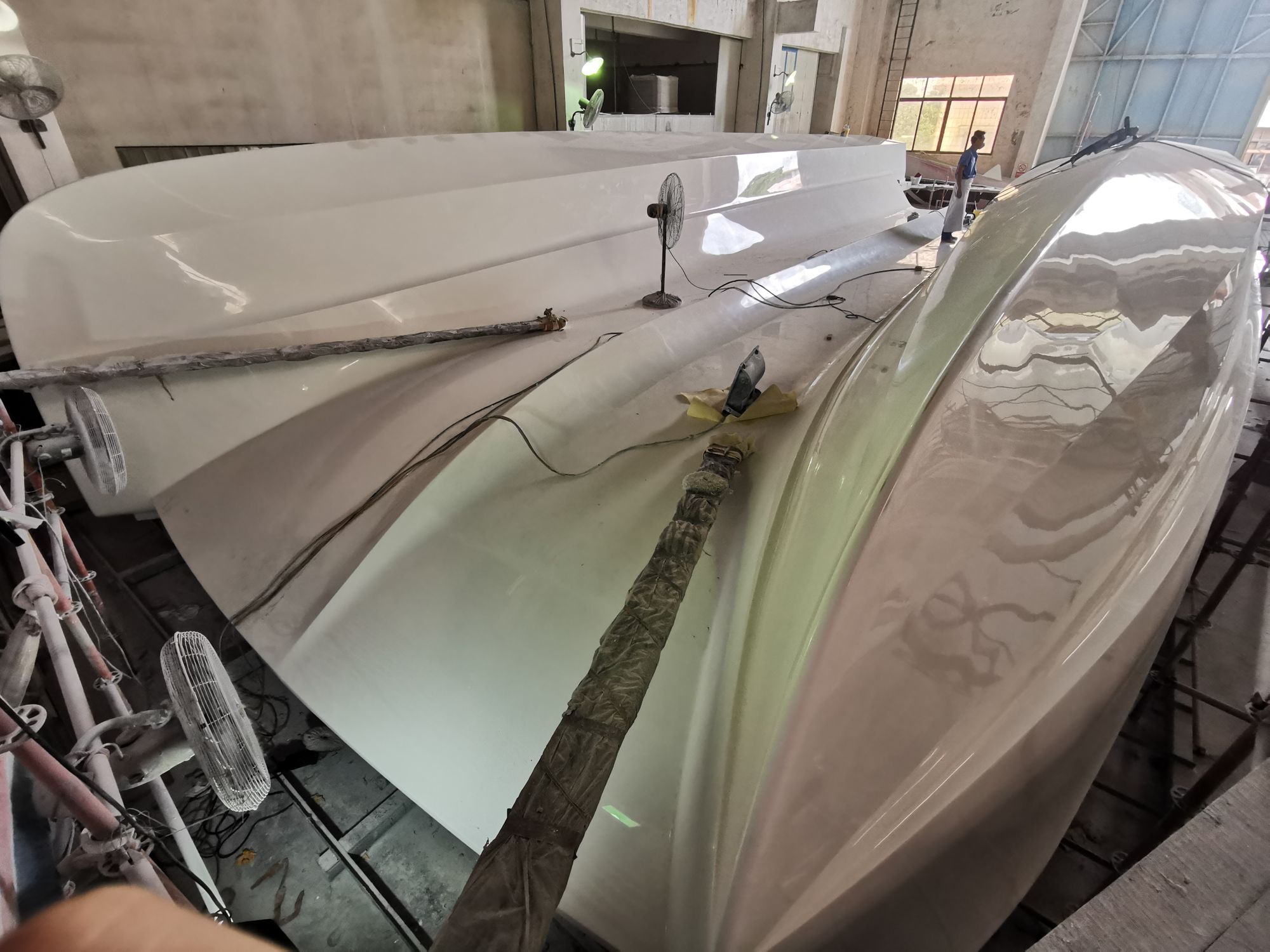
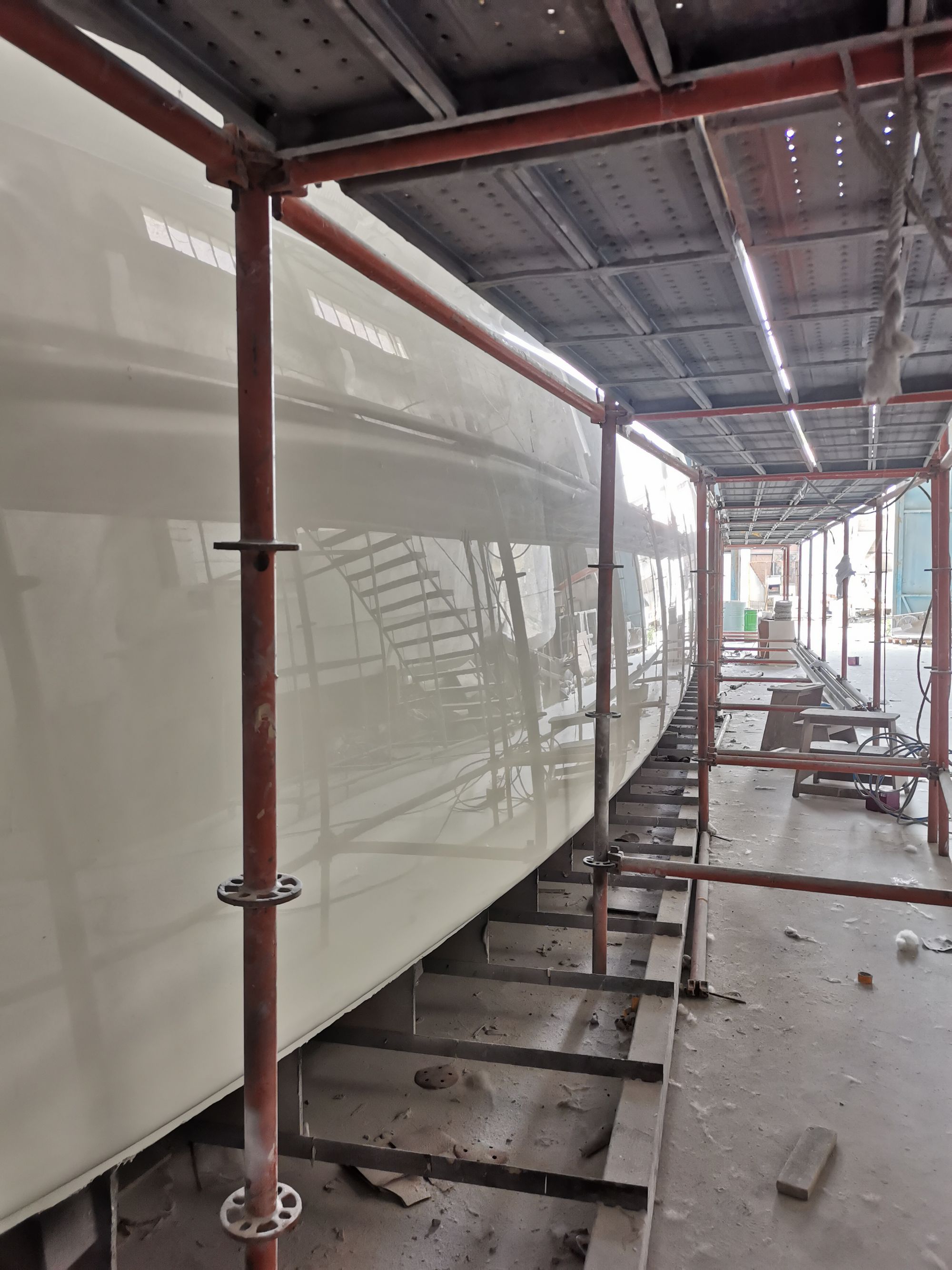
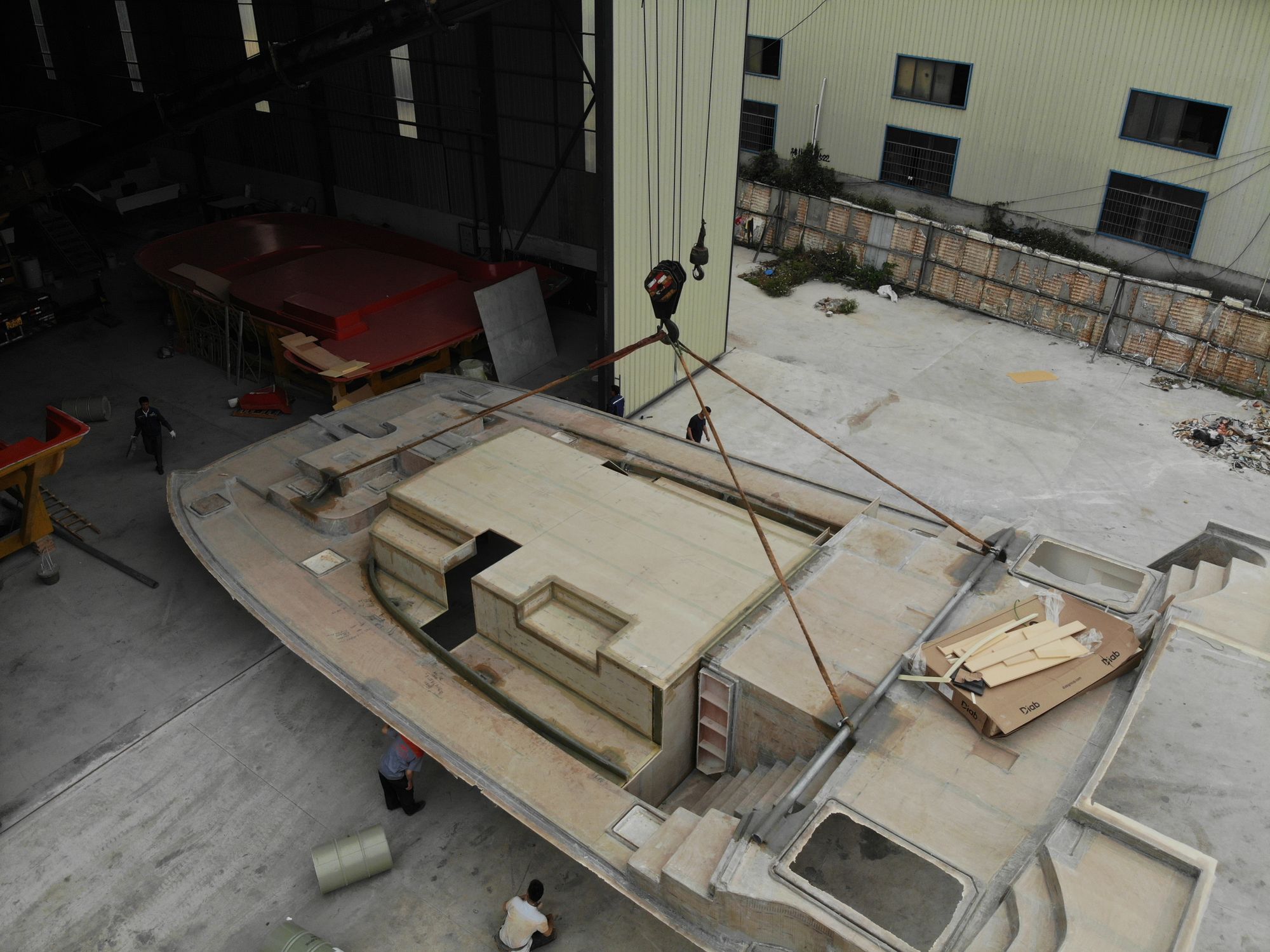
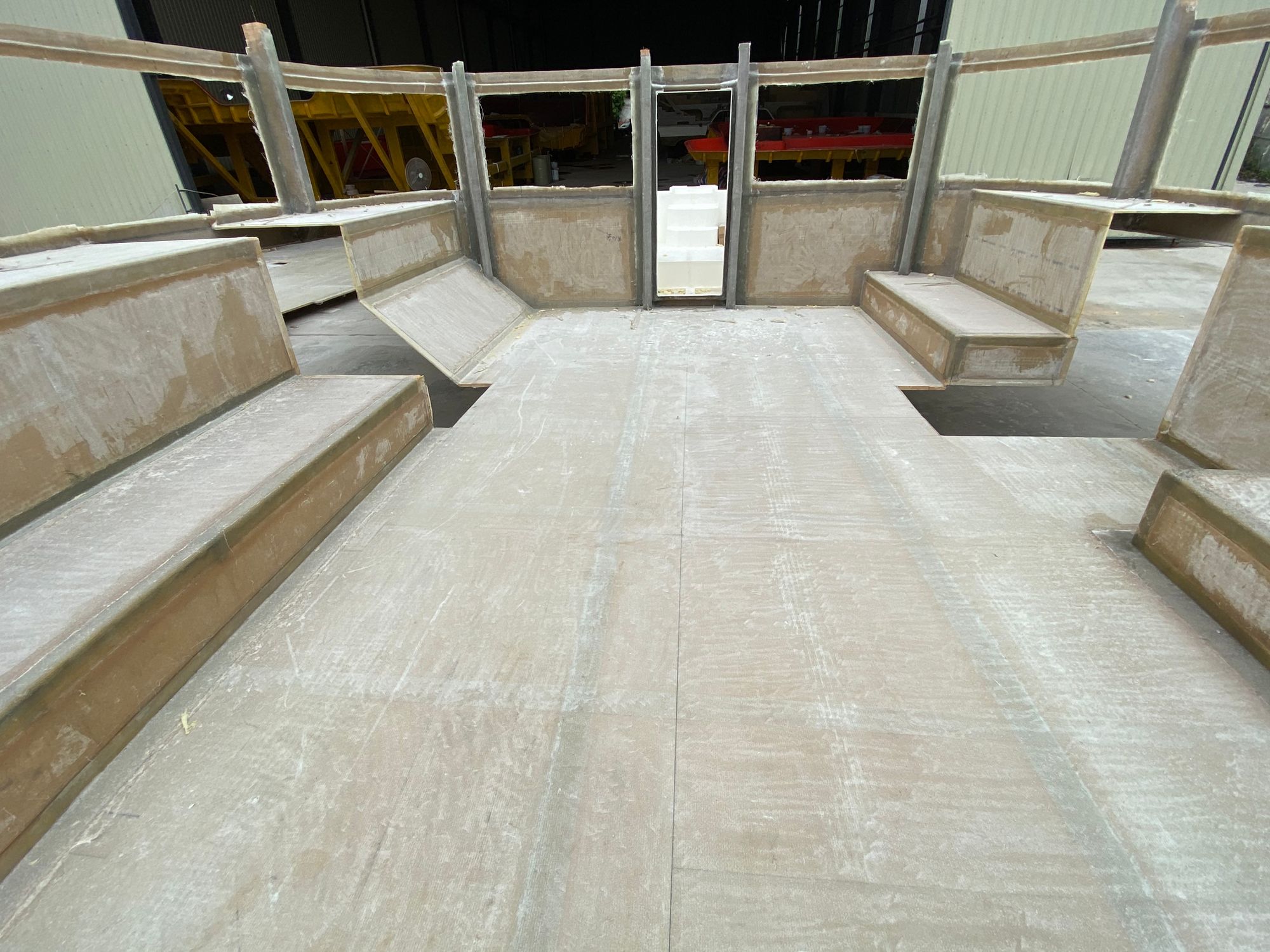
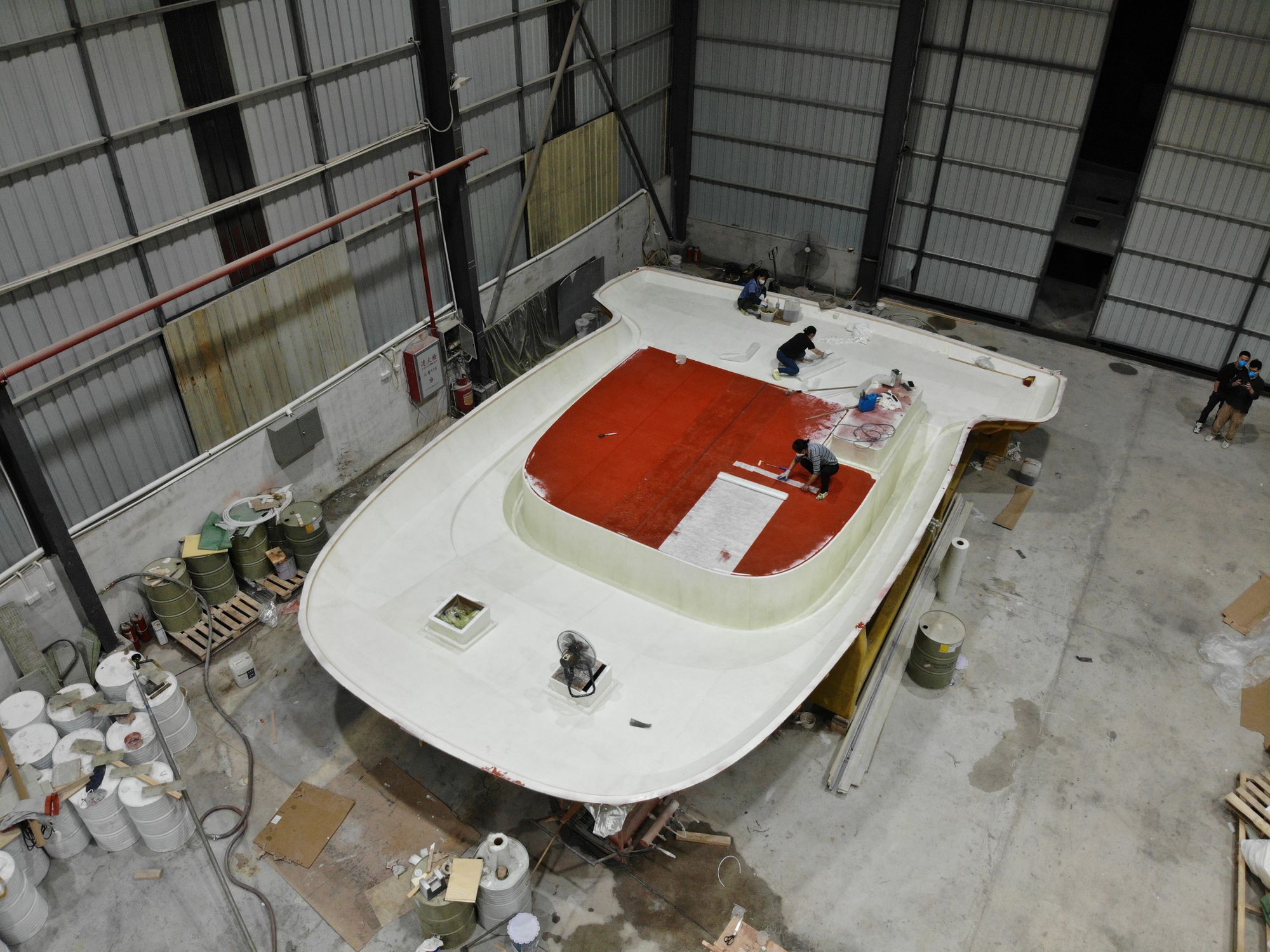
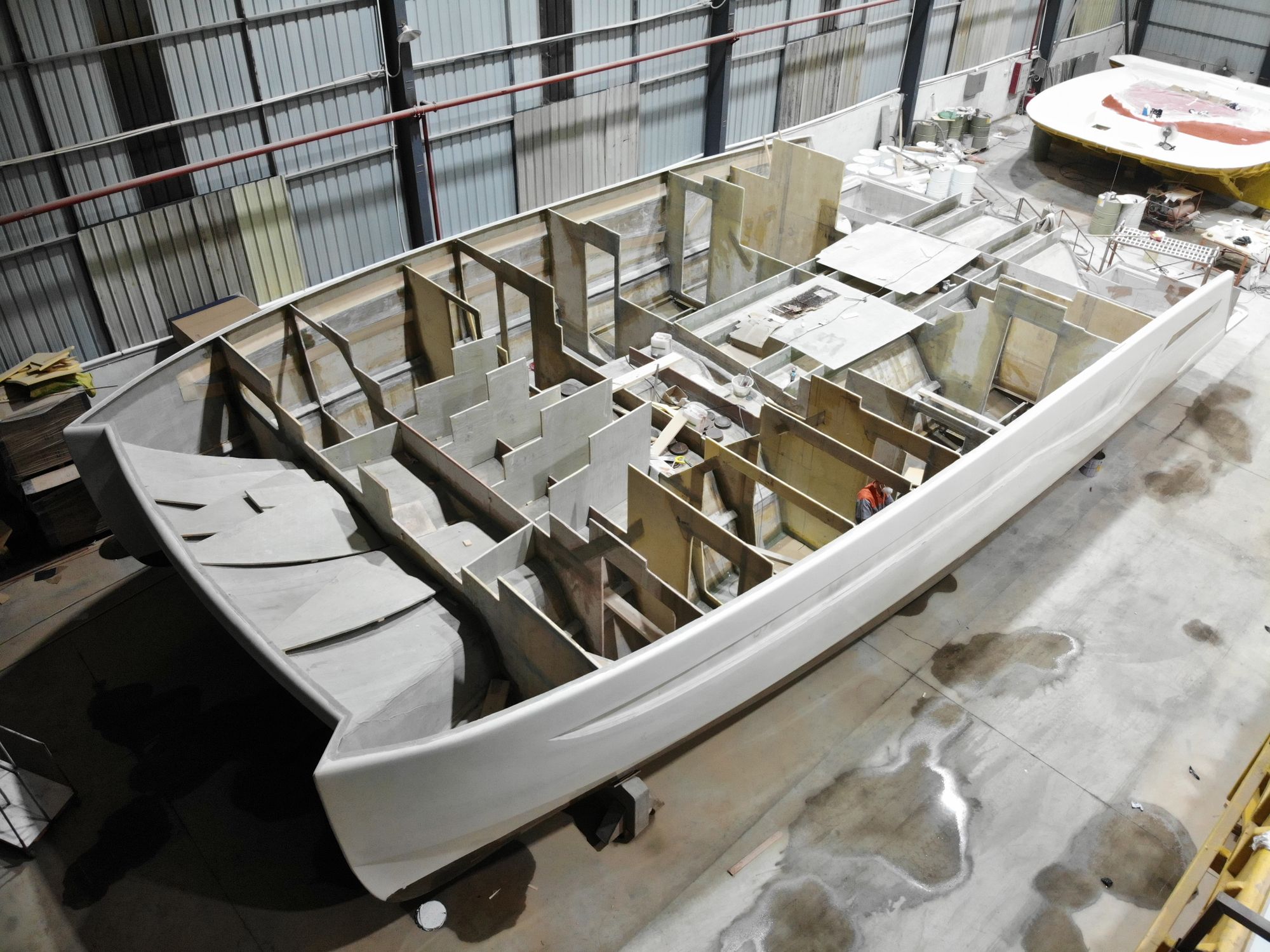
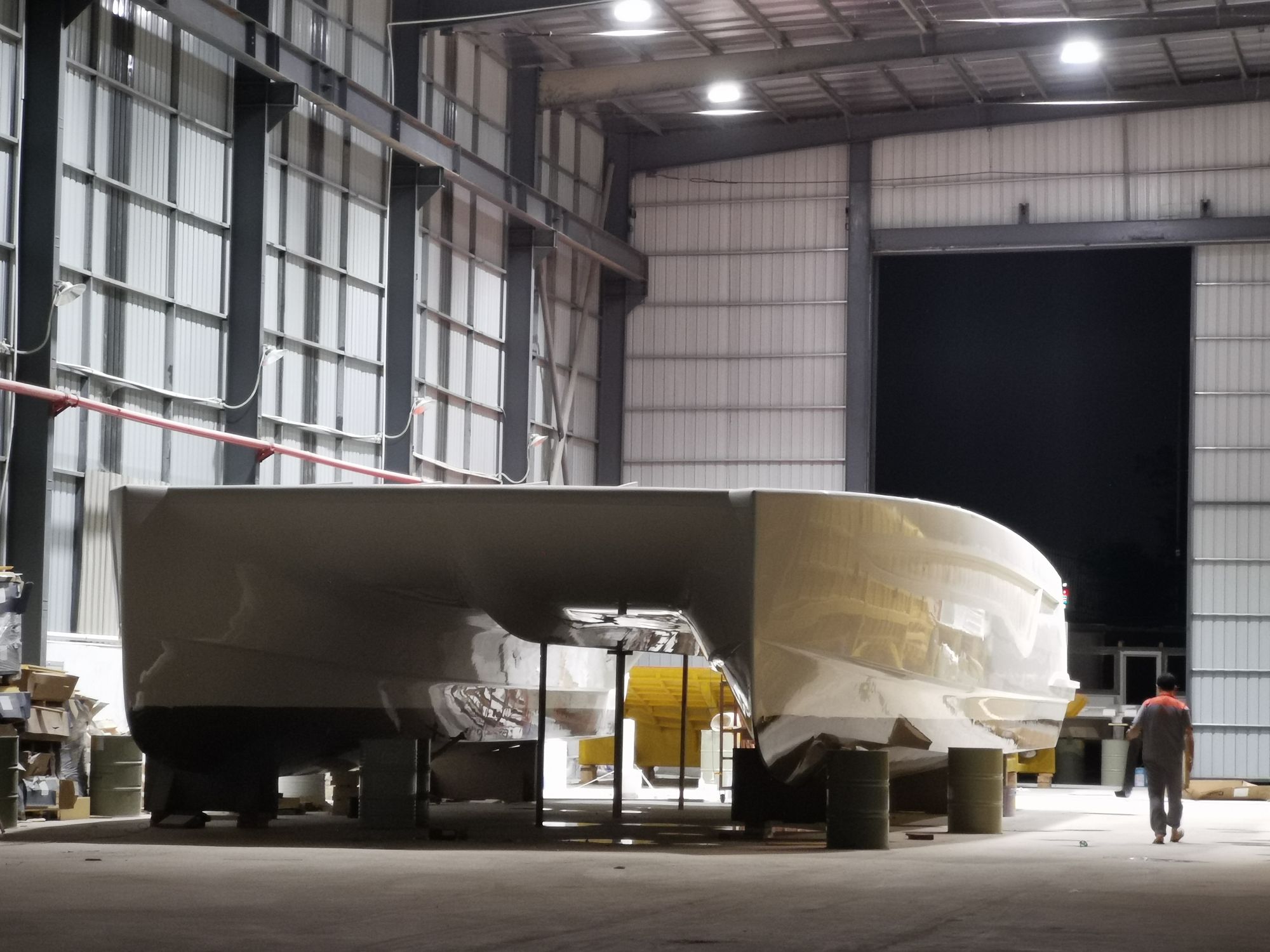
Engine Choice
Boating is full of compromises and tough decisions. One of our first decisions would be the engine choice which was narrowed down to 2 main contenders:
- John Deere 6068AFM85 @ 330 HP
- Cummins QSB 6.7 in either the 480 or 550 HP option
The JD 6068 has a nice 'wet lining' feature whereby you can replace the cylinder liners without having to take the engine out of the boat. It is regarded as a 'for life' engine with very good economy. Unfortunately at that HP our top speed would only be around 18 knots so we ended up going for the Cummins.
It's a common misconception that bigger HP means more fuel burn. Here are the comparative burn rates between the 480 and 550:
| RPM (Speed) | 480 HP (lph/gph) | 550 HP (lph/gph) |
| 1800 (12 kts) | 19.7 (5.2) | 20.5 (5.4) |
| 2800 (20 kts) | 72.2 (19.1) | 65.4 (17.3) |
The 550 is slightly worse at low cruise but better at the higher cruising speed.
As a side-note, I did consider going with a hybrid diesel electric power train but in the end the cost and additional complications did not match the benefits.
Bridle Design
On a catamaran a bridle is typically used when attaching to a mooring buoy or anchor so that the load is distributed across strong attachments points in both hulls. The bridle also helps reduce the yawing (back and forth) motion that tends to happen in stronger winds.
We anticipate being at anchor more than at a marina dock so we need a good bridle solution. Typically we'll use a 2 leg Mantus bridle where each leg is 26 feet.
I had also read about a 4 point bridal on a sailing cat. The advantage of 4 legs is to further share the loads, lower the angle of the attachment point to the anchor, and reduce vertical lifting in chop/swell. I've asked the yard to install 2 additional padeyes just above the waterline in each hull so that I can try it out as well. I'm anticipating we will use the 4 point system when moored in storm conditions.
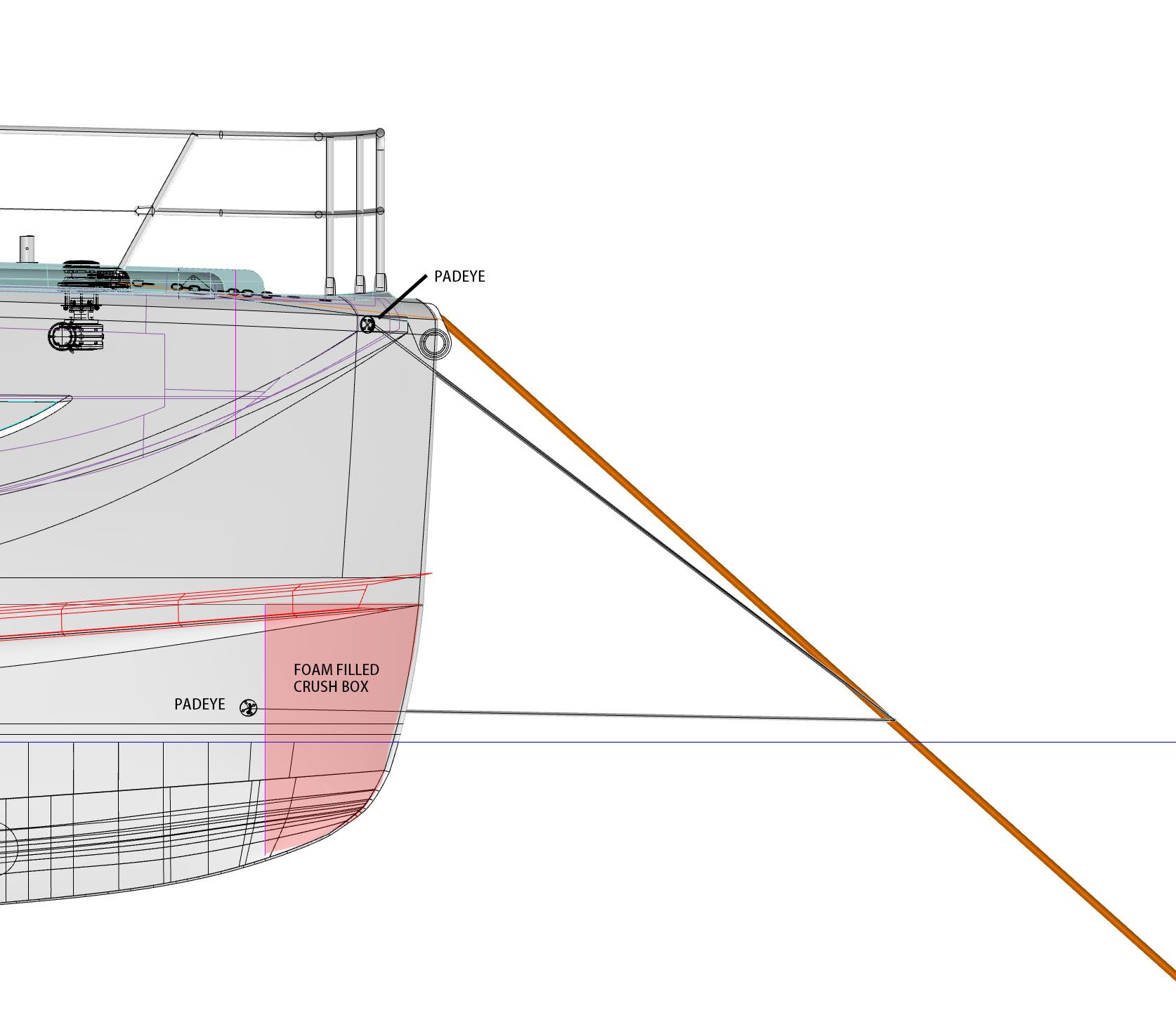
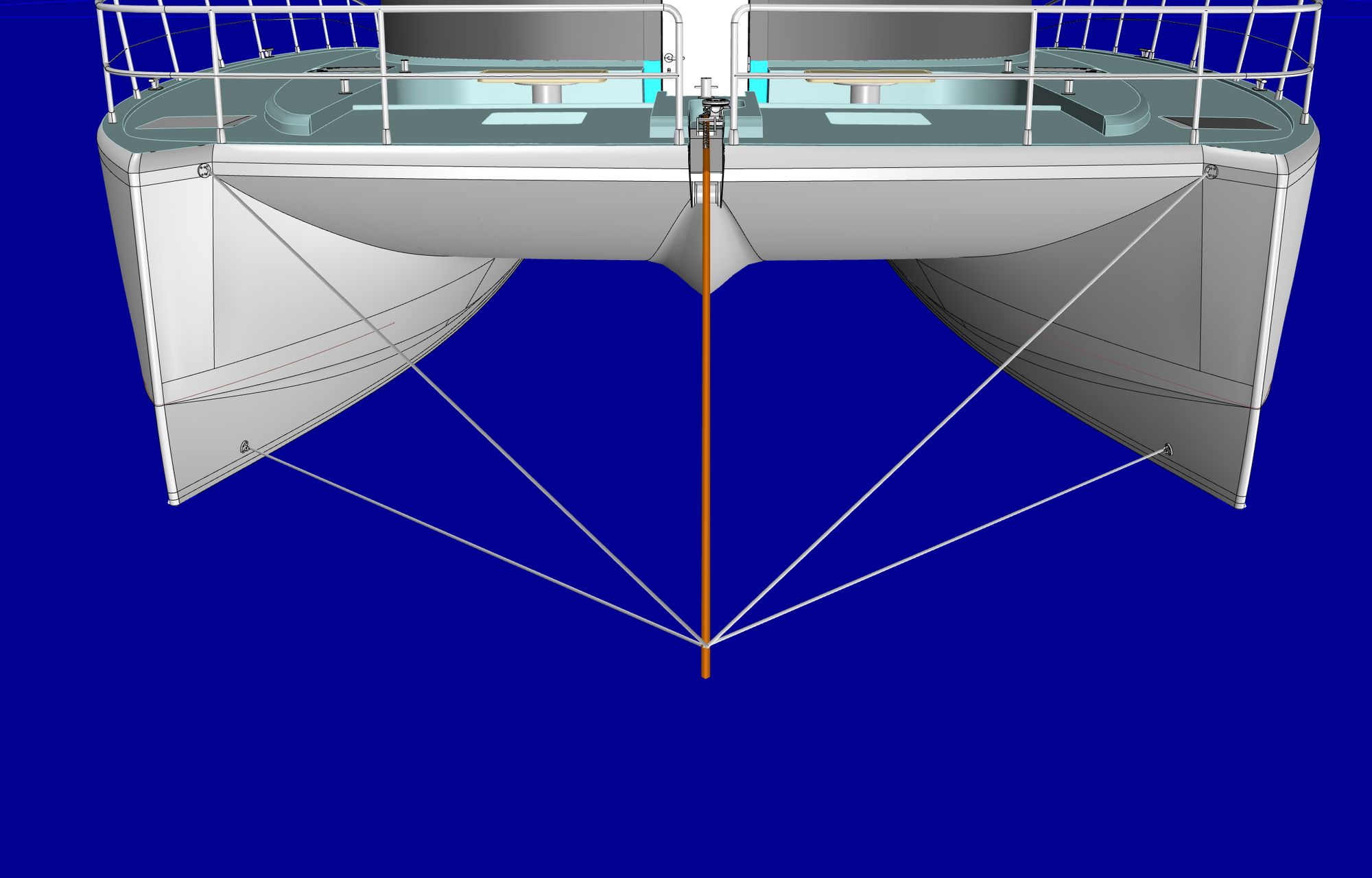
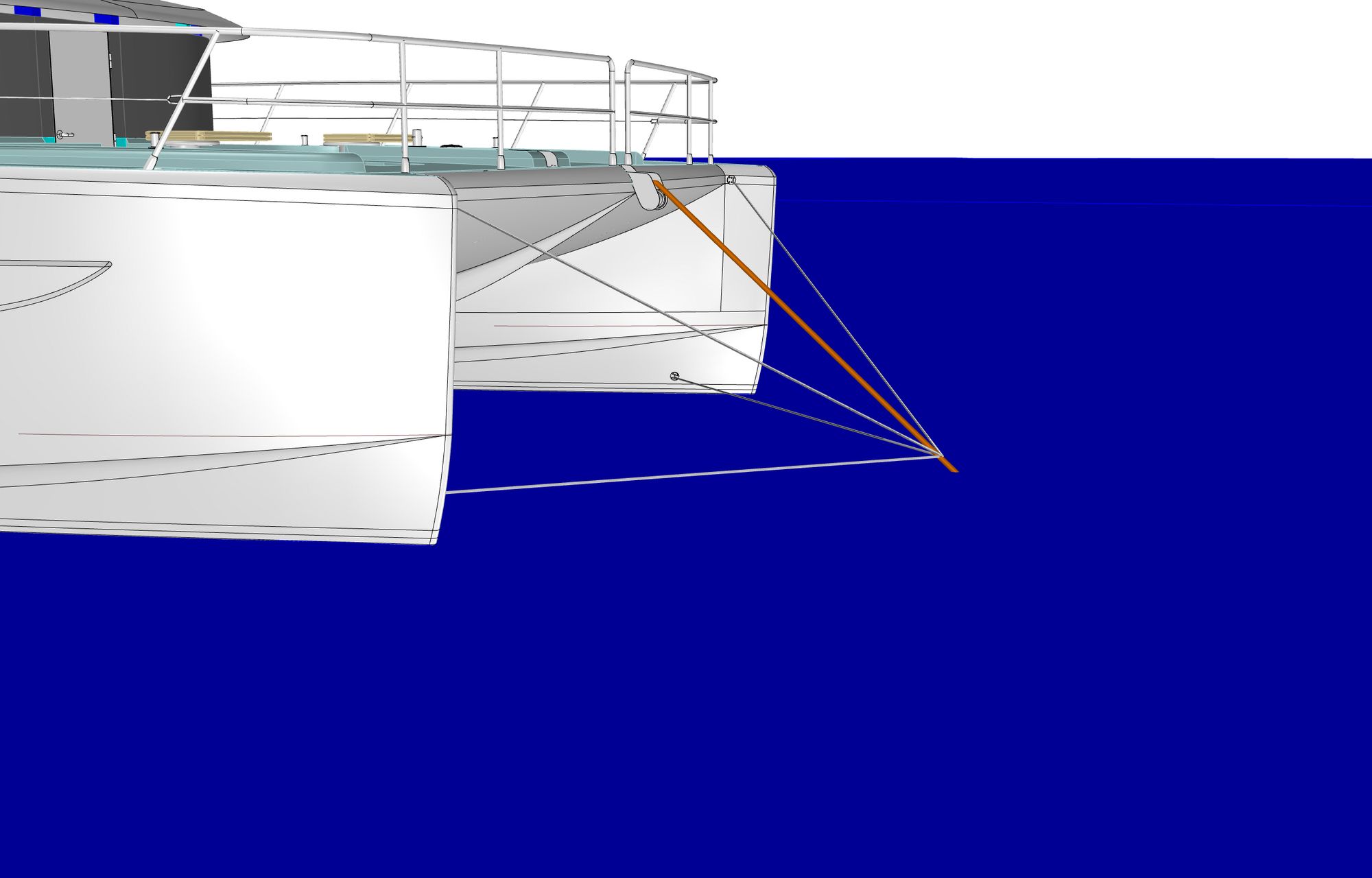
2/4 point bridle design
Storm Anchor
I hope to never have to use it, but we plan on getting a storm anchor for the boat in case we are caught out in the middle of the ocean in really snotty conditions. I started to think about where we would attach it. The bridle padeyes would probably work, but I wanted something that would reduce chafing. After looking around the forums I came across an article about a custom chainplate design (scroll down to the 'Sea Anchor Chainplates' section). This is my take on it:
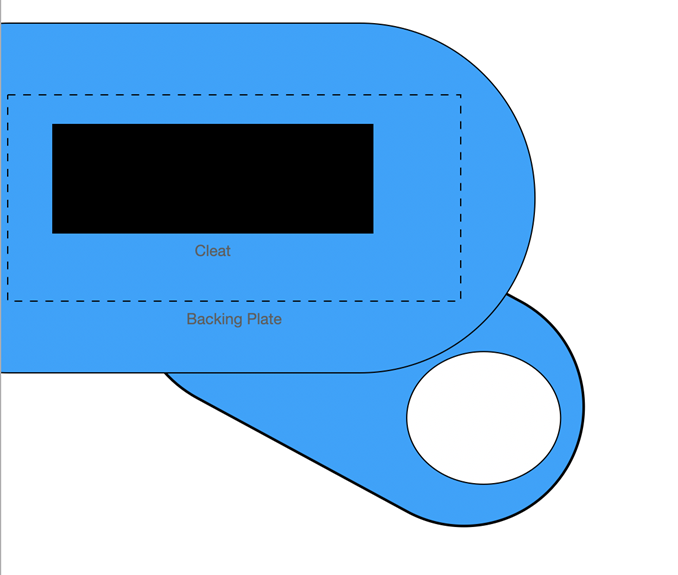
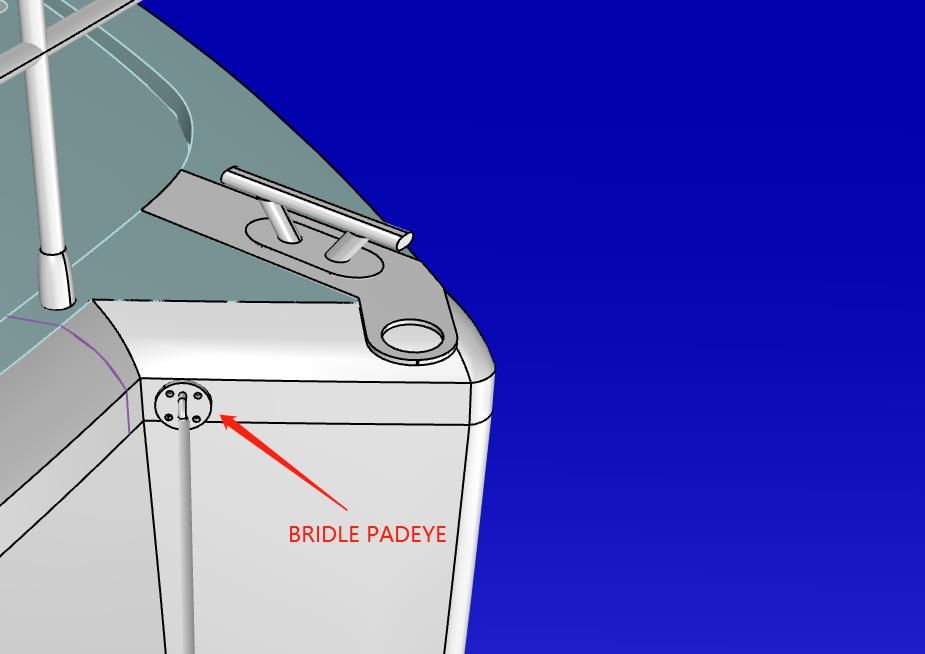
Design of the attachment point for the storm anchor
The image in blue on the left is the highly technical specification (not) I created. Eric at Granocean came back with this nicely integrated design. I really like it!
For those interested in reading up on more case studies on bridle set up and storm anchoring I highly recommend Victor Shane's Drag Device DB site. It is a compendium of experience reports across different hull types for those who have deployed their drogue/sea anchors. Some very interesting stories that show how these devices have been life savers.
That's all for this progress update. In the next build update we start turning our attention to the interior design and fit out, electronics and electrics.
